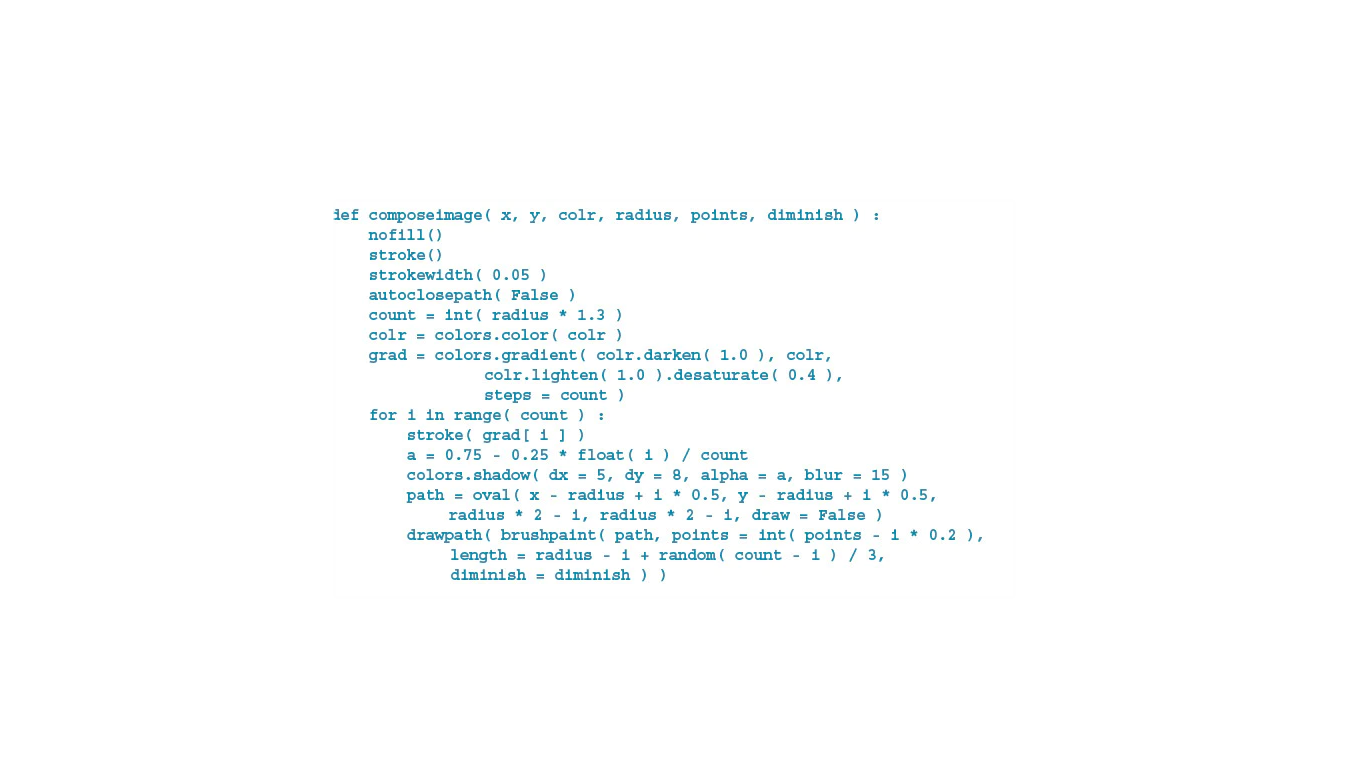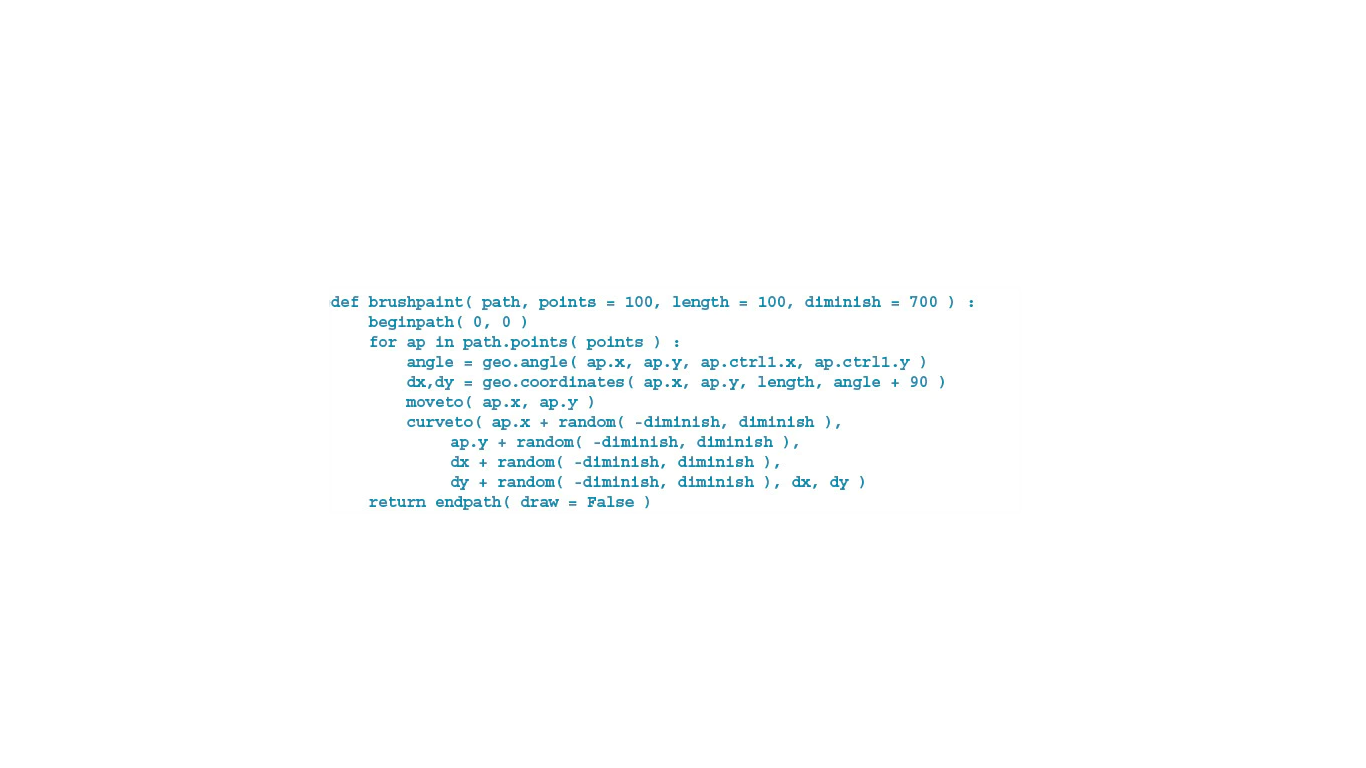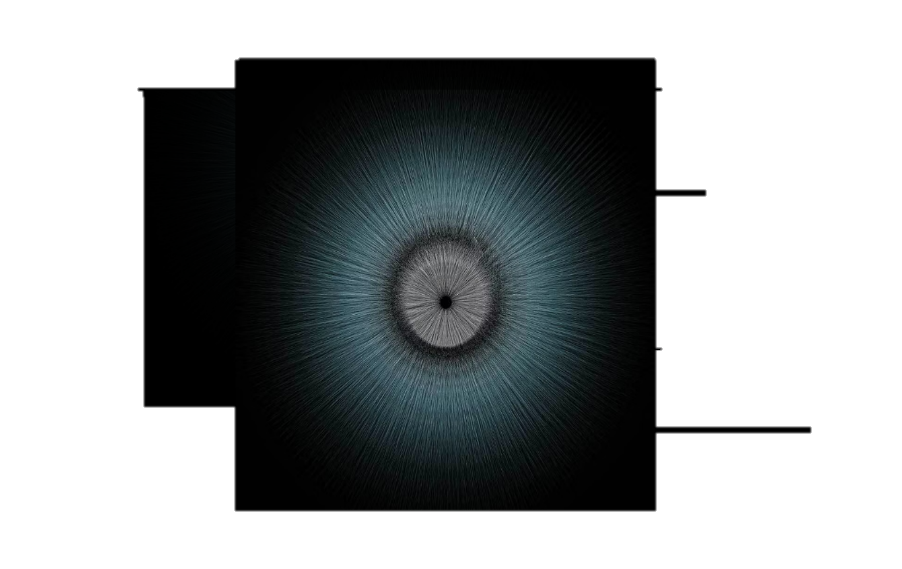Description
Generative art is a remarkably new configuration in which the artist-developer discerns imaginations and ideas by determining frameworks and commands. Creating generative art is, in many ways, similar to painting and any other parts of the design. This essay involves an analysis of the “All seeing eye” by Hailei Wang. The artwork is a unique piece of art showing an eye. It is magically presented using artificial intelligence codes to create multiple lines that make up an eye. The creation is magnificent, bringing attention to the whole eye instead of seeing all the lines used to paint.
This painting is a generative art using an autonomous system such as computer algorithms through complex randomness. The computer quickly puts in place features of the image through the use of the artists’ ideas, such as colors, shadows, shapes, and opacity. The artwork is created through graphic user interphase and computer codes known as python computer programming. The artist uses the randomness technique to create a number floating from 0.1 to 0.7. The artist generated six different images using the algorithm named cornu curve. The algorithm combined hundreds of curves in varying opacities and shades of blue. The creator asserts that the varying parameters are unpredictable and non-reiterative, making the image hard to recreate.


Cultural context
Generative art begins from individuals’ inspiration so that when creating a skill, they begin with imagination and sketch it on paper. They then put together the needed instruments, such as oils, brushes, and canvas, and then process the artwork until it meets expectations. For example, Hailei (2014) affirms generative art involves a process; first, she looks into things such as magazines or charts representing a mathematical formula that inspires her. She then sketches it on paper and notes down the key elements she can effectively use to describe the image. She then uses her computer to create the code to paint the correct brush strokes. The codes are geared toward producing images in the computer and involve multiple repetitions until the code results in the original idea. Such as the right color, shape, shadows, and ambiguity required.
Gaining knowledge about this piece of art has been an eye-opener for me to see new insights into how modern artwork is produced using computerized codes. The exciting thing about knowing about this generative art is that it is not only alluring but also profitable. I know to see the great work and performance put by the artist to produce something from nothing by just clicking onto the computer, and it generates what you need from it. For example, people can develop new ideas and eccentric patterns for industries such as fashion or use generative art to produce items such as sculptures and furniture. Creating art with code seems to inspire continuously composing innovations of impressive visual techniques. Computers have transformed multiple areas of human existence, and now, generative art has the potential to drastically change creative industries, providing limitless space for innovation.
Response and analysis
This artwork explores the aspects of media algorithmic culture of human and computer interaction to create that which seems impossible and unique. It shows how computer-assisted ideas can help produce amazing generative art. The idea of utilizing that which is random to generate images through running a code is captivating. The “All Seeing Eye” artifact depicts how the artists use different techniques with the help of a computer to develop the fundamental ideas that are turned into captivating outcomes. For example, there are algorithms and codes plus human experience to produce art, such as the sketching process.
The “All Seeing Eye” artifact asks the audience to think about qualities of algorithmic media culture, such as the existing unique features that can be used to create various techniques and procedures without wasting time or using several expensive resources. It compels the audience to think of machine learning that utilizes computers to reproduce human understanding, allowing them to determine and obtain consciousness from the world, and upgrade the completion of tasks, such as directions provided through algorithms, based on existing knowledge. For example, the use of algorithms in the current world activities applies human ideas that help the computer produce what’s relevant and helpful to humanity.
The computer technique of algorithms used by the artist is to deliver a relevant and captivating painting to the audience. There is a need and force to create something that attracts the audience’s attention to a piece of artwork, and the algorithm uses its techniques to deliver that which is correct. For this piece of art, Algorithms did perform the work of providing content that is potentially more “interesting” through repetitive work, making the artist to the detriment of irrelevant or low-quality. Another characteristic is that the artist creates the algorithm to take into account things such as the codes that result in the shapes, colors, opacities, and shadows. This aspect is content-based and designed to meet the users’ needs based on their search and interest in a specific category, for example, generative art.
The artifacts algorithms also work collectively to produce an item that represents an eye. Collaborative filtering involves matching similar items such as shapes, graphics, and shadows as per the users’ codes to create the required image (Velkova & Kaun, 2019). This way, each line from the million lines is well arranged as per the codes to produce a painting with the needed graphics and structure as the actual human eye. For example, the eye is structured into layers that make up the actual human eye in the artist’s representations. I think this piece is successful since it provides that which seems impossible and beyond human ability. For example, the artist creates an image depicting the actual human eye through algorithms and codes.
Brief presentation of the main points from the analysis
Computer-aided designs are built on mathematics; when painting with codes, one explores and visualizes the captivating formation and complex features in mathematics that most people do not interact with daily. Creating art using codes allows one to develop complex images that one can never make using hands (Wang, 2014). For example, the “All-Seeing Eye” artifact comprises countless lines and hundreds of layers, with every line having its own shadow, blur, and ambiguity. Wang (2014) aimed to utilize the intricate texture to produce the visual outcomes of catching and trapping the audience in what she calls the “eye.” The features make the audience look at it with wonder and imaginative gesture.
The computer is an appealing device for creating magnificent and alluring art, even though it requires repetitive and complex work. Drawing a piece of generative art made up of millions of shapes only takes a few minutes, making it easier to save time and resources. It gives room for individuals to explore and identify new features that they may use as they are making art (Dehlinger, 2020). Computerized codes are quicker than hands, which Hailey says could have taken her ten years to accomplish the artwork.

References
Dehlinger, H. (2020). Generative art.Journal of Mathematics and the Arts, 14(1–2), 33–36. Web.
Velkova, J., & Kaun, A. (2019). Algorithmic resistance: Media practices and the politics of repair.Information, Communication & Society, 24(4), 523–540. Web.
Wang, H. (2014). Painting with code. Ideo.Com. Web.